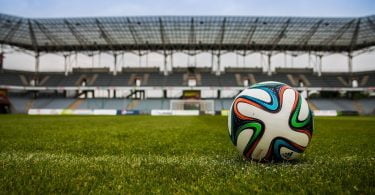The Australian Open is just seven weeks away and as the players take some much needed rest time speculation is already rife as to who will have their names engraved on a Grand Slam trophy in 2012.<
The Australian Open is just seven weeks away and as the players take some much needed rest time speculation is already rife as to who will have their names engraved on a Grand Slam trophy in 2012.
On the men’s side an educated guess between ‘the big three’ is likely to make you some money at the bookies. Profiting from the women’s tour, which provided four different Grand Slam champions this year is a much harder task.
There is an argument that having a different champion for each Grand Slam demonstrates the depth of the women’s game. On the other hand, with three of the four winning their maiden slam, suggestions of a lack of consistency among the women’s game may also be made.
On the ATP Tour there are a number of intense rivalries eagerly anticipated by fans at the latter stages of major events. On the women’s tour we have to look back to 2005 when Justin Henin, Kim Clijsters, Maria Sharapova, Lindsay Davenport, Amelie Mauresmo and the Williams sisters were involved in high tempo on-court rivalries that produced excellent tennis.
Since then we have lost a number of women’s top stars through retirement and ill health and have seen a number of players emerging as potential superstars before swiftly disappearing off our radar.
Ana Ivanovic is a prime example. The Serbian had her most successful year in 2008 reaching the semi-final at Wimbledon, the final at the Australian Open and winning the French Open. Her form has since dropped dramatically and she has found herself unable to progress past the fourth round of a slam. Her record has been so woeful that she has been beaten in the opening round of three of the past five Grand Slam events, and at one point, found herself languishing well outside of the top 100.
Jelena Jankovic and Dinara Safina, both former world number ones have also suffered. While still awaiting their first Grand Slam titles, they have both contested finals. Jankovic is worryingly best known in Britain for her mixed doubles triumph alongside Jamie Murray at Wimbledon rather than her surge to the summit of the world rankings. Safina, who contested three Grand Slam finals between 2008 and 2009, has dropped to a current ranking of 129. This is due partially to her absence from the court but her decision to leave the game temporarily was due to erratic form.
This lack of dominance enabled Kim Clijsters to exploit a weakened field. The Belgian’s homecoming from a two year retirement in 2009, sparked new interest in the women’s game. After playing in Cincinnati and Toronto she received a wild card into the US Open, where she was viewed as a threat but not much more. Remarkably by the end of her two weeks in New York she was picking up her second major trophy, four years after claiming her first on Arthur Ashe Stadium Court.
What did this say about the state of the women’s game?
While most of us were thrilled to see a champion of Clijsters quality return to the big stage and have her fairy tale return to glory, the reality was that her win highlighted the lack of a dominant force within the sport. On the ATP Tour this is not an issue. If Rafael Nadal returned from a two year hiatus, it is highly unlikely that Novak Djokovic or Roger Federer would allow him to have such a smooth return to winning ways.
The form of each Grand Slam champion declined after winning each major trophy, illustrating this lack of dominance. Kim Clijsters suffered a loss of form after her triumph in Australia and injury ended her year in August. Li Na’s historic French Open win, which earned her an estimated $40 million in endorsements, may have been the distraction that led to a second round loss at Wimbledon and a first round loss at the US Open. The Wimbledon champion Petra Kvitova lost in the third round of Cincinnati and Toronto soon after her glory at SW19, while Sam Stosur’s post US open form has been disappointing. Could you imagine this happening to the top stars on the men’s side?
The Forbes Rich List of the highest-paid female athletes between July 2010 and July 2011 included seven tennis players. In recent years endorsement levels have risen to an all-time high with Sharapova currently the highest earning female athlete. Outside interests have played a key role in damaging the women’s game as we have lost Clijsters, Sharapova and both Williams sisters from key events.
There has been a suspicion for some time that a number of top stars are not fully fit when it comes to the major tournaments. A criticism levelled against such players has been that off-court activities are more important to them than the game that gave them access to these lucrative deals.
The end of season championships demonstrated the stark difference in interest between the men’s and the women’s games. The WTA Tour Championships in Istanbul saw the top eight women players, watched by 71,000 fans. This was an impressive number but paled into insignificance against the 250,000 who visited the O2 Arena in London for the men’s ATP World Tour Finals.
Unquestionably the top female stars owe much of their phenomenal success to the WTA. The dilemma faced is how to keep these players fully committed to tennis in the midst of multi-million dollar endorsement opportunities, as well as looking for new stars to gain consistency. Until this is solved the women’s game may continue on the outside court








